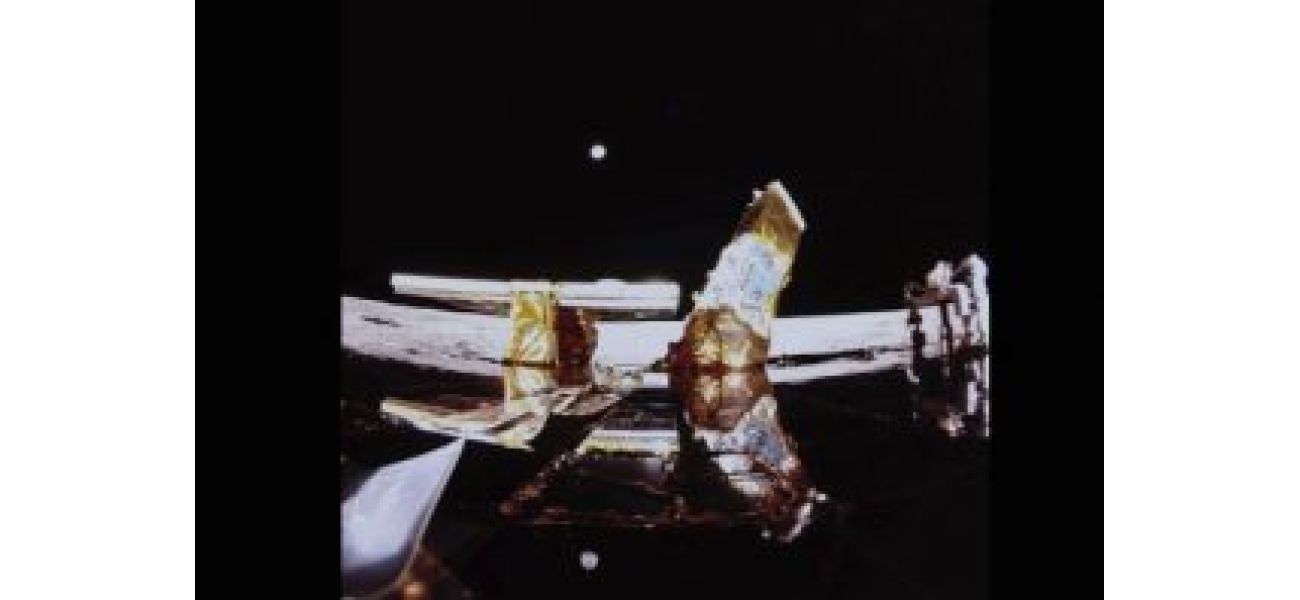Blue Ghost successfully lands on moon, delivering cargo for NASA.
A private lunar lander carrying NASA experiments landed on the moon as companies continue to prepare for future astronaut missions.
March 2nd 2025.

On a sunny Sunday, a private lunar lander successfully landed on the moon, carrying various experiments for NASA. This was just one of the many companies trying to establish a business on Earth's closest neighbor, in preparation for future astronaut missions.
The lander, called Blue Ghost, was created by Firefly Aerospace and descended from lunar orbit, guided by an autopilot system. Its destination was the slopes of an ancient volcanic dome on the northeastern edge of the moon's near side. The team at Firefly's Mission Control in Austin, Texas, confirmed the touchdown, which took place approximately 225,000 miles away.
Excited shouts and cheers filled the room as Firefly's chief engineer, Will Coogan, announced the successful landing. This was a huge milestone for Firefly, a startup that had been founded just ten years ago. They were now the first private company to safely land a spacecraft on the moon, without any crashes or mishaps. Not even countries have been able to achieve this feat, with only five claiming success so far: Russia, the United States, China, India, and Japan.
Half an hour after landing, Blue Ghost began sending back images from the surface. The first photo was a selfie, slightly obscured by the sun's glare. But the second photo was a breathtaking shot of the Earth, a small blue dot shining in the vastness of space. It was a reminder of the incredible distance they had traveled and the significance of their mission.
However, Blue Ghost was not alone on the moon for long. Two other companies were hot on its heels, with the next one expected to land later in the week. Blue Ghost's unique design, standing at 6 feet 6 inches tall and 11 feet wide, gave it extra stability and allowed it to make a successful landing. It was named after a rare species of fireflies found in the United States.
This mission was a partnership between Firefly and NASA, with the space agency paying over $100 million for the delivery of 10 experiments to the moon. These experiments included a vacuum to collect moon dust, a drill to measure temperature beneath the surface, and a device to eliminate abrasive lunar dust that had caused issues for Apollo astronauts in the past.
Blue Ghost's safe landing was part of NASA's commercial lunar delivery program, which aims to stimulate a lunar economy and gather important information before astronauts return to the moon in the near future. Ray Allensworth, a member of the Firefly team, mentioned that the lander had skillfully avoided any hazards and landed safely within the designated target zone.
The experiments on board the lander would have two weeks to run before the lunar nighttime began and the lander had to shut down. In addition to collecting data, Blue Ghost also had the capability to track and acquire signals from the US and European navigation systems, a promising development for future lunar explorers.
This successful landing on the moon set the stage for more companies to join the race to the lunar surface. One of them was Intuitive Machines, a Houston-based company whose lander was due to land just a few days after Blue Ghost. Their target was the bottom of the moon, closer to the south pole than any previous lander had attempted. This was their second attempt, after their first lander had tipped over and broken a leg during landing.
Another company, ispace, was still a few months away from landing on the moon. They had also shared a rocket ride with Blue Ghost from Cape Canaveral in January. Like Intuitive Machines, this was their second attempt at landing on the moon, after their first lander crashed in 2023. Over the years, the moon has become a graveyard of failed missions from various countries and companies.
Despite the risks and challenges, NASA was determined to continue their partnership with private companies, aiming for at least two lunar landings per year. As the space agency's top science officer, Nicky Fox, stated, this opens up a new avenue for scientific research and exploration. Unlike the Apollo missions, which had a much larger budget and highly trained astronauts, these private companies were operating on a smaller budget and had to rely on robotic craft to land on the moon.
Overall, the successful landing of Blue Ghost was a major accomplishment for Firefly Aerospace and a significant step towards a future where private companies play a crucial role in space exploration. And as more companies join the race to the moon, the possibilities for scientific discovery and economic growth are endless.
The lander, called Blue Ghost, was created by Firefly Aerospace and descended from lunar orbit, guided by an autopilot system. Its destination was the slopes of an ancient volcanic dome on the northeastern edge of the moon's near side. The team at Firefly's Mission Control in Austin, Texas, confirmed the touchdown, which took place approximately 225,000 miles away.
Excited shouts and cheers filled the room as Firefly's chief engineer, Will Coogan, announced the successful landing. This was a huge milestone for Firefly, a startup that had been founded just ten years ago. They were now the first private company to safely land a spacecraft on the moon, without any crashes or mishaps. Not even countries have been able to achieve this feat, with only five claiming success so far: Russia, the United States, China, India, and Japan.
Half an hour after landing, Blue Ghost began sending back images from the surface. The first photo was a selfie, slightly obscured by the sun's glare. But the second photo was a breathtaking shot of the Earth, a small blue dot shining in the vastness of space. It was a reminder of the incredible distance they had traveled and the significance of their mission.
However, Blue Ghost was not alone on the moon for long. Two other companies were hot on its heels, with the next one expected to land later in the week. Blue Ghost's unique design, standing at 6 feet 6 inches tall and 11 feet wide, gave it extra stability and allowed it to make a successful landing. It was named after a rare species of fireflies found in the United States.
This mission was a partnership between Firefly and NASA, with the space agency paying over $100 million for the delivery of 10 experiments to the moon. These experiments included a vacuum to collect moon dust, a drill to measure temperature beneath the surface, and a device to eliminate abrasive lunar dust that had caused issues for Apollo astronauts in the past.
Blue Ghost's safe landing was part of NASA's commercial lunar delivery program, which aims to stimulate a lunar economy and gather important information before astronauts return to the moon in the near future. Ray Allensworth, a member of the Firefly team, mentioned that the lander had skillfully avoided any hazards and landed safely within the designated target zone.
The experiments on board the lander would have two weeks to run before the lunar nighttime began and the lander had to shut down. In addition to collecting data, Blue Ghost also had the capability to track and acquire signals from the US and European navigation systems, a promising development for future lunar explorers.
This successful landing on the moon set the stage for more companies to join the race to the lunar surface. One of them was Intuitive Machines, a Houston-based company whose lander was due to land just a few days after Blue Ghost. Their target was the bottom of the moon, closer to the south pole than any previous lander had attempted. This was their second attempt, after their first lander had tipped over and broken a leg during landing.
Another company, ispace, was still a few months away from landing on the moon. They had also shared a rocket ride with Blue Ghost from Cape Canaveral in January. Like Intuitive Machines, this was their second attempt at landing on the moon, after their first lander crashed in 2023. Over the years, the moon has become a graveyard of failed missions from various countries and companies.
Despite the risks and challenges, NASA was determined to continue their partnership with private companies, aiming for at least two lunar landings per year. As the space agency's top science officer, Nicky Fox, stated, this opens up a new avenue for scientific research and exploration. Unlike the Apollo missions, which had a much larger budget and highly trained astronauts, these private companies were operating on a smaller budget and had to rely on robotic craft to land on the moon.
Overall, the successful landing of Blue Ghost was a major accomplishment for Firefly Aerospace and a significant step towards a future where private companies play a crucial role in space exploration. And as more companies join the race to the moon, the possibilities for scientific discovery and economic growth are endless.
[This article has been trending online recently and has been generated with AI. Your feed is customized.]
[Generative AI is experimental.]
0
0
Submit Comment





